Chapter 9
3D Printing with SketchUp Models
IN THIS CHAPTER
![]() Understanding basic principles of 3D printing
Understanding basic principles of 3D printing
![]() Knowing your 3D printers
Knowing your 3D printers
![]() Dividing your model into layers
Dividing your model into layers
![]() Using SketchUp files for 3D printing
Using SketchUp files for 3D printing
![]() Preparing a SketchUp model for 3D printing
Preparing a SketchUp model for 3D printing
![]() Going beyond basics with joints and motion
Going beyond basics with joints and motion
Seeing your masterpiece in SketchUp is cool. You can twist and turn and view it from every angle. But wouldn’t the world be so much cooler if you could hold your creation in your hands? This chapter talks about using a 3D printer to make your SketchUp model real.
To follow along with this chapter, you need a working understanding of SketchUp and its tools. We assume you’ve heard about 3D printers and are curious to find out more. We give you a look at 3D printing technology in general and touch briefly on the spectrum of 3D-printing scenarios, from home hobbyist desktop units to machines that can “print” a full-size multistory concrete building.
Most of this chapter discusses guidelines, methods, and tools to help you modify your SketchUp models to be 3D-printed. We also point out a few limitations of 3D printers and explain how you can work within them.
If you already own a 3D printer, we recommend SketchUp Pro, the desktop version. You’ll be able to generate more complex models in more interesting ways using extensions. The Web version is ideal for mastering (or trying out) 3D printing because it’s easy to make, edit, and prepare 3D-printable models.
Building Up a View of 3D Printing
It may sound like magic, but 3D printing is a process that uses the 3D information from your SketchUp model to build a physical version of that model in the real world. It’s science fiction come true. Star Trek called its version of a 3D printer the “matter replicator.”
3D printing got its start as the hot new technology of the mid-1970s — and spent 35 years stuck as the high-priced plaything of prototyping engineers and the lucky people who build fighter jets. That’s where it stayed until the first do-it-yourself desktop 3D printers appeared in 2009. Overnight, the cost of a 3D printer fell from $500,000 to $500. What was once the coveted technology of the chosen few is now found on the desk of any well-equipped designer, engineer, or model maker.
There are many different 3D printing technologies and manufacturers, but they all use the same basic underlying concept. In fact, it’s such a fundamentally simple process that it can be done using any generic printer.
Say what?
Yes. Pretty much any software that can produce a 3D object can also cut a cross-section view at any desired cutting-plane location. Chapter 11 covers how to do this in SketchUp.
The following steps describe the basic principle behind almost every 3D printer:
- Start with a cutting plane just a couple of thousandths of an inch above the bottom of the model.
- Print the cross-section view.
- Cut the printed shape out of the paper.
- Move the cutting plane up a couple of thousandths of an inch.
- Print the cross-section view.
- Cut the printed shape out of the paper.
- Glue it on top of the previous cutout.
- Repeat steps 4 through 7 until you reach the top of the part.
Bingo! You have a physical 3D model of your computer model, sort of like assembling a loaf of bread slice by slice.
Before you complain about how long this method would take, remember this: Nobody promised it would be fast. Even real-world 3D printers can take several days to produce large parts because they all work on the same principle: Slice the computer model, print it, move up a bit, slice again, print it, and so on.
Knowing Your 3D Printers
3D printers fall into one of three main categories, with a few subcategories:
- Fused deposition modeling
- Stereolithography
- Fused powder modeling
Fused deposition modeling (FDM)
FDM printers are the most widely available type of desktop 3D printer. They build objects using solid plastic fed through a fancy robotic nozzle that is similar to a hot-melt glue gun. FDM printers are inexpensive to buy, with desktop models ranging from $500 to $2,500. Printed parts are done the moment the printer is finished; there’s no secondary process needed to finish or strengthen the object. The parts that FDM printers make can be as strong as parts from injection molding, and they cost around 4 cents per cubic centimeter. On the downside, FDM 3D printers have limited maximum resolution and tend to have a lot of moving parts, which can affect their reliability.
FDM printers consume plastic filament as they build objects. Filament is drawn into the printer, heated, and then fused to form the object. Filament comes coiled on spools that look a bit like brightly colored string for a weed trimmer. These inexpensive spools are available online, and some large office supply stores are starting carry them as well.
The highest-end FDM machines feed metal wire such as steel or bronze through an arc-welder head, but they still work on the same principle as the plastic-fed machines.
Stereolithography (SLA)
SLA 3D printers represent one of the oldest 3D printing technologies. They use a laser to build solid parts in a vat of liquid resin, selectively hardening the resin layer by layer. Desktop SLA machines cost between $2,500 and $8,000, but you’ll hear ongoing speculation about a printer emerging at a price below $1,000. SLA offers superior printing resolution, which gives finished parts a glassy smooth surface. The machines are typically small and nearly silent, with only a few moving parts. Prints from an SLA machine typically cost around $0.15 per cubic centimeter and require some cleanup after printing, which can include such things as draining trapped pockets of liquid resin. Also, due to the resin’s toxicity, printed objects must be washed in isopropyl alcohol before being handled.
SLA’s consumable resin is an amazing bit of chemical engineering. It’s a liquid at room temperature until it’s exposed to intense ultraviolet light, which hardens the resin into a solid plastic. You should buy bottles of liquid resin from the maker of your 3D printer to ensure compatibility. Resin has a set shelf life and needs to be stored with some care; it can begin to harden if left in sunlight.
Resin-based inkjet printers are an expansion of SLA technology. They use an inkjet printhead to spray fine layers of an ultraviolet (UV)-sensitive resin, which is then hardened by a powerful UV light.
Fused powder modeling (FPM)
FPM machines fall into three general subcategories:
- Selective laser sintering (SLS): Uses a laser to melt and fuse a finely powdered material, which can range from common plastics to exotic metals. SLS machines can reproduce fine detail without adding any supporting structure to the model.
- Inkjet, powder-based: Use a powder that is selectively hardened by liquid glue sprayed from an inkjet printhead. The glue can be colored and mixed; this is one of the few technologies that offers full-color 3D printing.
- Paper-based: Builds objects out of copy paper by gluing the sheets together then cutting away the excess. (Okay, paper isn’t a powder, so maybe it doesn’t seem like it belongs in the fused powder modeling category, but FPM is the closest fit.) The parts are immensely strong and can be treated like wood after printing. See, a standard printer CAN be used to do 3D printing.
Designing for Successful 3D Printing
There’s an old joke that says carving a statue of an elephant is easy; just get a big piece of marble and cut off anything that doesn’t look like an elephant. By this logic, 3D printing is the other way around; get a pile of raw material and stick together everything that does look like an elephant. This process is called additive manufacturing.
Now let’s move on to the bad news. Okay, it’s not really bad, it’s just a few things that you need to know about in order to 3D print successfully.
Building a model in layers
SketchUp’s world is an amazing place where you can rapidly build a 3D model while ignoring little things like the laws of physics. An object being 3D-printed, however, is subject to all the forces of the physical world, including that pesky omnipresent one, gravity. If you’re using an FDM machine, then new layers or portions of new layers can’t be printed floating in open space; they need to have something below them.
- Use the 3D printer’s support-material function. This function automatically creates a secondary structural lattice around the part. The lattice holds up any layers or portions thereof that would otherwise be free-floating in space. Support material may be dissolvable after printing, or you may have to manually remove it with your fingers and tweezers, depending on your type of 3D printer. Either way, removing support material can become the most labor-intensive part of 3D printing; it also increases the amount of materials used and the time it takes to print the object.
- Design and print your parts in a way that limits the conditions that allow unsupported layers to exist. Smooth transitions and sweeping curves not only look awesome, but also can be easily printed without resorting to the use of support material.
Designing to avoid support material
With a little forethought, you can avoid needing to use support material by adhering to a few basic guidelines:
-
Think about your part’s orientation. Orient the part so that it prints with the smallest number of overhangs. This may mean printing your object upside down or on its side. The inverted J in Figure 9-1 will quite happily print the green column from the bottom up, layer after layer, until it encounters the red section. Oops, gravity. Lying it on its side allows it to print without support material, and it will print much faster.
 Most 3D printers take the same amount of time to print each layer, no matter how much or how little is on it. Total print time, therefore, is based mostly on how many layers need to be printed. The upright part in Figure 9-1 would require 36 layers, whereas the reclining one needs only 6.
Most 3D printers take the same amount of time to print each layer, no matter how much or how little is on it. Total print time, therefore, is based mostly on how many layers need to be printed. The upright part in Figure 9-1 would require 36 layers, whereas the reclining one needs only 6.By the way, the layer thickness shown in Figure 9-1 is not to scale or is a very small part.

FIGURE 9-1: Reorienting a part can make it print faster and leave little or no support material to clean up.
- Try rethinking your angle. Most printers can print a slope between 45 and 60 degrees from vertical without using support material. Keep this limit in mind as you design. Chamfers and fillets are great for supporting features and smoothing out rough transitions. In Figure 9-2, a chamfer turns a part with an unsupported overhang into an easily printable part. As a bonus, fillets and chamfers make your part stronger by eliminating stress points.

FIGURE 9-2: A chamfer can turn an unprintable 90-degree angle in to a printable 45-degree one.
- Consider breaking your object into multiple prints. The sphere in Figure 9-3 could be printed using support material, but it will print faster and with less cleanup if you split it in half and attach the two halves afterward. Later in the chapter, you learn about systems to make the parts lock together quickly, a technique that may be mandatory with FPM machines.

FIGURE 9-3: Often, a subdivided part is faster and cleaner to print than a part printed all at once.
Bridging
Bridging is a feature on FDM 3D printers that lets you print a structure across a gap without using support material. To bridge a gap, the structure being printed must be parallel to the build platform and have a secure point of attachment on either side, as with the top of the door frame shown in Figure 9-4, and can’t be too wide. The printer attaches plastic to one side of the gap and stretches a line across to the other side. The process is repeated until the gap is filled with side-by-side strings. Future layers are then printed on top as usual.
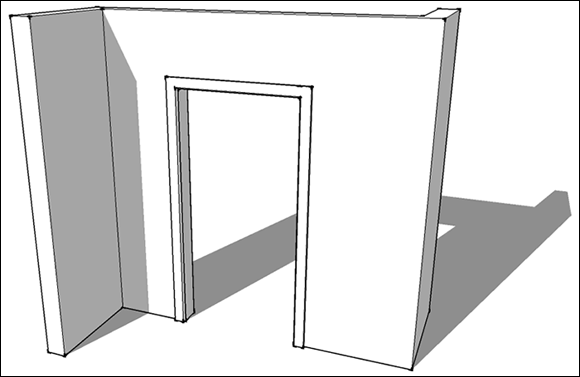
FIGURE 9-4: When is a door frame a bridge? When it’s 3D-printed.
Preparing a SketchUp Model for 3D Printing
The longer you work on a SketchUp model, the more it tends to fill with illogical intersections, free-floating cantilevers, and other quick shortcuts. When you’re making an image or walkthrough, these are minor trade-offs that help get a big job done quickly. Drawing something that looks right on the outside in SketchUp doesn’t necessarily mean it can be 3D-printed with one click of a button. A 3D printer can’t interpret that mishmash of geometry to guess what you were really thinking.
In this section, you discover how to clean up that SketchUp madness and make it into a 3D printable object. The cleanup process uses tools discussed in earlier chapters, but you use the tools in different ways from those described previously.
Cleaning up a messy SketchUp model can look like a daunting task when you start. Remind yourself that it’s just like eating an elephant: Divide the job into manageable chunks and work on them one at a time, even if the trunk can be a bit chewy.
Peeking inside a model
Although you can use the Section Plane tool to create sectional views through your model, this awesome tool has another use: It can show you what’s going on inside your model’s geometry. 3D printers see a SketchUp model as a series of 2D horizontal slices. Figure 9-5 moves the Section Plane through the model horizontally to show what the 3D printer is going to see.

FIGURE 9-5: Using a section plane to look at all overlapping parts that make up your model.
To get a watertight solid object, all groups need to be combined into one, and all that extraneous geometry has to be eliminated from the model. Chapter 11 discusses the Section Plane tool in detail.
Knowing what makes a solid model
To 3D-print your parts successfully, they need to be solid objects, or as close to solid as possible. No missing or extra faces, overlapping sections, or extraneous bits are allowed. Your SketchUp model needs to describe all aspects of the outer surface of the shape. For example, to print an egg, a SketchUp model would need to describe 100 percent of the outside of the egg’s shell but none of the yolk. That’s not as simple as it sounds.
A solid model that’s 3D-printable meets the following criteria:
- It’s airtight. All SketchUp models consist of infinitesimally thin surfaces joined together. Think of a balloon as the surface model for a bowling ball. To 3D-print a bowling ball, the balloon can’t leak. Make a small hole in it with a pin, and you can’t have a 3D print.
- The model walls have a thickness. Zero thickness equals zero printing. A SketchUp wall that is a single face has a thickness of zero and will not print. You need to make sure all the walls have some thickness by having a second face offset from the first.
- The model has only an outer surface. In SketchUp, you can create a model quickly (in the abstract, anyway) by pushing parts through each other and building revisions on top of old geometry. To your 3D printer, however, such models are an illogical mess that would make M.C. Escher cry. Your 3D printer doesn’t stand a chance. You need to clean up everything so that only the outer surface remains. Fortunately, SketchUp tools and extensions discussed later in this chapter in the following section can help. If you do want to 3D-print a hollow object, then you need an inner surface, offset from the outer one. To 3D-print a hollow cube, for instance, you have to draw a smaller 3D cube positioned inside a larger cube. Most printers interpret the space between the two cubes as wall thickness, and the space inside the inner cube as a void.
-
Groups and components are merged. Chapter 5 explains groups and components, and how to use them to keep your SketchUp model organized as you work. Groups and components are great for keeping parts from sticking together as you work, but to make your SketchUp model a solid shell that can be 3D-printed, you need to merge everything.
 Before you start exploding things and sticking them together, spend a moment thinking about how you want your actual 3D-printed model to work. For most projects, you need to merge all your groups and components into one printable object before exporting your model from SketchUp. For larger projects, think about assembling the blocks into sections that you can 3D-print and attach to one another later.
Before you start exploding things and sticking them together, spend a moment thinking about how you want your actual 3D-printed model to work. For most projects, you need to merge all your groups and components into one printable object before exporting your model from SketchUp. For larger projects, think about assembling the blocks into sections that you can 3D-print and attach to one another later.
The upshot is that 3D printers aren’t very smart. If you make them guess what your part should look like, they usually guess wrong. Figure 9-6 is a testament to the carnage.
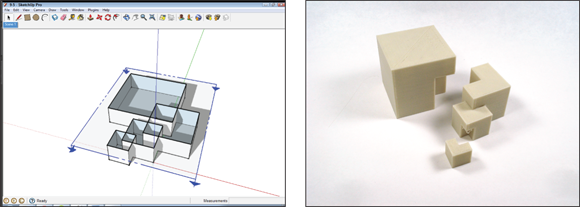
FIGURE 9-6: This poor print never stood a chance.
Using Solid Tools to combine groups
Chapter 6 explains how to use SketchUp Solid Tools to perform Boolean operations. Solid Tools are great for unifying groups made up of simple solid parts. They can save significant time. Unfortunately, complex shapes cause the Solid Tools to act unexpectedly — and, after multiple iterations, to break down.
In Figure 9-7, Solid Tools had no problem intersecting several simple cubes together, but adding a complex shape to the object caused the tools to break down. The accompanying sidebar takes a closer look at why this happens.

FIGURE 9-7: Booleans are great for simple things. But don’t rely on them for complex cleanup.
CleanUp3 and Solid Inspector2
Two tools from the SketchUp Extension Warehouse are essential for 3D printing: CleanUp3 and Solid Inspector2, both created by Thomas Thomassen. CleanUp3 and Solid Inspector2 are available in the desktop version. (Web: Solid Inspector2 is available as a utility within SketchUp for Web with a paid subscription or as part of SketchUp for Schools.)
CleanUp3 checks and simplifies the geometry of your SketchUp model. It combines multiple faces, eliminates extraneous data, and erases any lines that don’t make a face. Two of the most useful CleanUp3 options are Erase Duplicate Faces and Repair Split Edges, which can be enabled in the CleanUp3 menu. Duplicate faces and split edges are errors that inevitably appear in your model as you work in SketchUp, and they drive 3D printers nuts. Both errors are hard to recognize and repair manually.
CleanUp3 is also great at simplifying STL files (3D-printable files) you import into SketchUp. In Figure 9-8, which shows the triangulated data you get from an imported STL file, the faces have been broken into hundreds of triangles. By removing that triangulation, CleanUp3 makes files downloaded from 3D printing communities (such as Thingiverse at https://www.thingiverse.com) easier to edit in SketchUp.
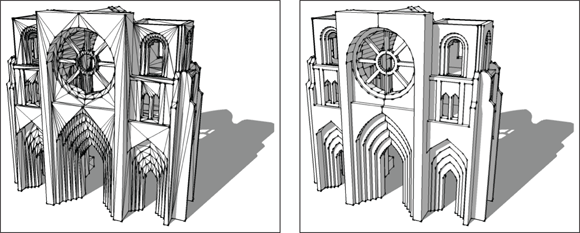
FIGURE 9-8: An imported STL file, before and after running CleanUp3.
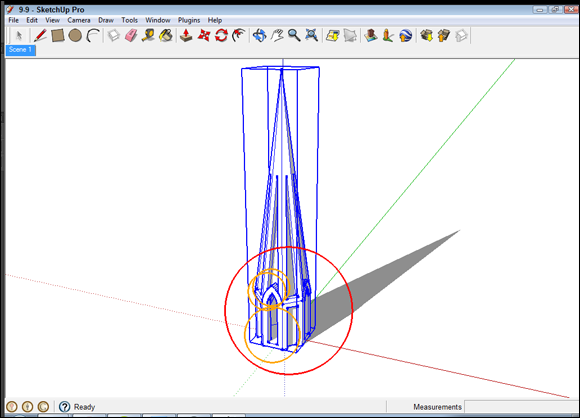
FIGURE 9-9: Solid Inspector is great at finding problems that need a quick fix.
Combining groups with Intersect Faces
An alternative way to assemble your groups into one object is to use the Intersect Faces command, which we introduce in Chapter 4. For 3D printing, Intersect Faces can eliminate overlapping geometry and leave behind a solid object. You can use Intersect Faces on very complex objects and groups that aren’t already solid.
In a complex model, isolate and work on one small part of the SketchUp model at a time, making each section into one solid part. Repeat the process on those sections until you have one solid model. The following steps outline this process in more detail:
-
Select the groups you want to combine and group them.
Your original groups are now subgroups that exist together inside a new group.
-
Right-click the selected groups from step 1 and select Intersect Faces (with Model).
Doing so opens your new group and selects all the subgroups, drawing lines at all the places that groups intersect. These new lines of intersection exist outside the subgroups and aren’t stuck to anything yet, as shown in Figure 9-10.
- Select the lines of intersection and copy them by pressing Ctrl+C.
-
Open each of the subgroups and paste the lines of intersection into them, using Edit ⇒ Paste in Place. (Web: Right-click ⇒ Paste in Place.)
Figure 9-10 shows the procedure.
-
Open each subgroup and erase all the areas of overlap beyond the lines of intersection.
Work deliberately, moving back and forth between the subgroups to make sure you’re erasing the right areas.
-
Back in the main group, select all the subgroups, right-click the selection, and choose Explode on the menu that appears.
You end up with one outer shell of an object in its own group. Figure 9-10 shows this result.
-
Consult the Entity Info utility tray to confirm your resulting group is a solid.
If necessary, run CleanUp on the new part and use Solid Inspector to check for any accidental holes.
 Individual faces and short line segments can get lost during this process. You may need to make minor touch-ups with the Line tool.
Individual faces and short line segments can get lost during this process. You may need to make minor touch-ups with the Line tool.
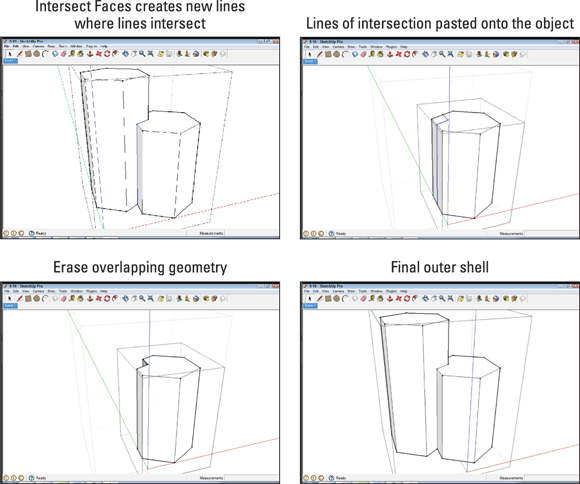
FIGURE 9-10: Erase overlapping geometry to create an outer shell.
Checking a model’s normals
From a highly technical computer-science perspective, every face in your model has two sides: an inside and an outside. The two sides are set apart by a bit of data called the face’s normal.
SketchUp is smart enough that it doesn’t matter how the normals (also known as the front and back) are oriented; both sides are treated the same. 3D printers aren’t that clever; they need to have all the normals oriented so the outsides are pointing out and the insides are pointing in.
To check your model’s normals, you need to look at it styled with SketchUp’s default texture. Choose View ⇒ Face Style ⇒ Monochrome to hide any colors or textures you’ve added to the model and see the default material. (Web: Search for Monochrome.)
Any faces that are shaded the default blue have reversed normals. These faces need to be corrected, or the 3D printer thinks they’re missing. You have two options for correcting faces:
- To correct a single face, right-click the face and select Reverse Faces from the menu that appears.
- To correct several misaligned faces, right-click one of the faces that is white and select Orient Faces. Doing so flips all the faces in the model to match the view shown in Figure 9-11.

FIGURE 9-11: A correct normal is a happy normal.
Size matters!
Every 3D printer has a minimum and maximum size of object it can build, as shown in Figure 9-12. These sizes are usually set by the size of the tool printing the material and by the overall size of the printer. To build something bigger, you have to get creative. To build something smaller, you need a more expensive 3D printer.

FIGURE 9-12: Too big and too small. There is something there on the right; it’s just very small.
Too small to print
In the SketchUp world, you can design a skyscraper small enough to fit on the head of a pin, but a 3D printer can’t print it. Every 3D printer has a minimum size for what it can build; anything smaller than that won’t be printed. You find these values listed as Minimum Feature Size and Minimum Wall Thickness. Feature Size and Wall Thickness can turn into stumbling blocks when you’re trying to 3D-print a SketchUp model that was constructed at full size and then scaled down.
- Minimum Wall Thickness tells you how thin a freestanding piece of geometry can be and still be printed. That thickness is typically between 1.0mm and 0.5mm.
- Minimum Feature Size is the smallest size that a feature can be on the surface of the object that will be printed. It’s typically between 0.7mm and 0.2mm.
If you’re modeling a small object for 3D printing, create the model in small units, such as millimeters, from the beginning. To set or change the default units in your SketchUp model template, choose Window ⇒ Preferences (Mac: SketchUp ⇒ Preferences) and select a template that uses millimeters. You can also adjust the default units in the Model Info window by choosing Window ⇒ Model Info and selecting the Units option on the left (Web: Change the units of your model in the Model Info panel, near the bottom of the utility tray on the right).
Too big to print
The biggest object you can 3D-print at one time is set by the printer’s build volume, which is the physical space where the printing occurs. If your model won’t fit in the build volume, you have to either scale your object down, or print it in parts. The next section talks about how to split up a model so you can print it in parts.
Here are some handy hints for making best use of build volume:
- The build volume, or envelope, is given by manufacturers as measurements of X, Y, Z. X and Y are the width and depth (SketchUp’s red and green axes) of the build surface; Z (blue) is the maximum height.
- It’s helpful to create a representation of your 3D printer’s maximum build volume in your SketchUp model. Make a translucent block representing the maximum build volume and check to see whether your SketchUp model or its components will fit inside that volume.
- A 3D printer’s build platform is much longer diagonally than it is on any one side. To take advantage of the extra length, rotate long parts so they stay inside the build volume.
- Printing large objects comes with its own issues and complexities. Large objects are more prone to failure and breakdowns. Make sure you’re comfortable with your 3D printer before you start printing your own sports car.
Breaking your model into arts
As you do more 3D printing with SketchUp, you’ll run into the need to split your model into parts. Some ideas are just too big to fit into your 3D printer’s build volume. Other ideas want to be 3D-printed in a rainbow of colored plastic. And sometimes a model just needs to be split to make it easy to print.
Where to cut
When subdividing a SketchUp model into printable parts, start by thinking about what you’re going to do with the seams. If you’re going to sand, paint, and finish the model, have at it and cut wherever you want. But sanding and finishing is a huge amount of work, especially if you’ve never done it before. It’s much easier to make your cuts and seams look like they’re intentional parts of the model.
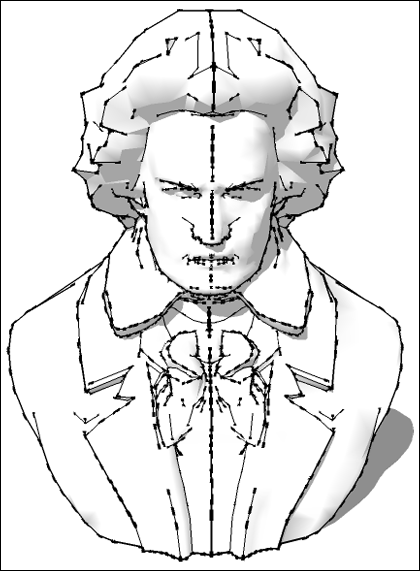
FIGURE 9-13: The line is far less objectionable when it’s well thought out.
Another good place to hide a cut is at a change in elevation, curvature, or color, as shown in Figure 9-14. Placing a seam where the surface of a part is already interrupted or in transition will make it far less noticeable. This is the strategy most commonly employed for injection-molding parts. Pick up something around you that’s made of plastic and find the seams where the parts come together. If you can imitate that type of seam, people will readily accept that your object is a real thing. It will feel correct among manufactured things in our injection-molded world, and you’ll fool people into thinking your 3D-printed part came from a factory somewhere.
For very large constructions, the only option may be to establish a grid and cut into build-volume-size blocks. Sanding, finishing, and painting can work well on large parts, but expect to spend substantial time doing it right. If you’ve spent the energy to build something that big, it’s worth the extra time to make it amazing.
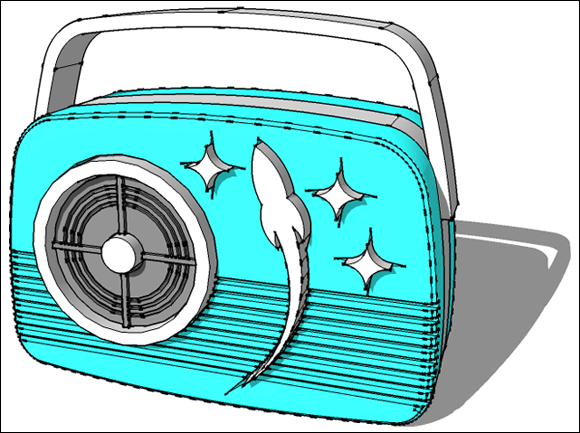
FIGURE 9-14: Do the seams look out of place?
How to cut
Cutting a model into parts is very similar to using the Intersect Faces tool to combine groups (discussed earlier in the chapter). You use a piece of geometry as a cutter that will be intersected with the larger object and become the new edges of the cut.
If your model is fairly simple and you have SketchUp Pro, you can use the Solid Tools to short-circuit this process. Create a solid block as a cutting object and use the Solid Tools ⇒ Trim command. Remember to run CleanUp3 and Solid Inspector2 on the new parts when you’re done. For more complex models, use the Intersect Faces method:
-
Select the group you want to cut, and make a new group around it.
The original group becomes a subgroup.
-
Working inside the new group, create geometry in the shape of the cut you want to make.
Work on top of the subgroup, so you place the cut correctly, as shown in Figure 9-15.
- When you’re done placing cuts, make the new geometry its own group.
-
Select the Cutter object and choose Edit ⇒ Intersect Faces with Context (or choose Edit from the shortcut menu).
Doing so draws a line at every place where groups touch. These new lines of intersection exist outside the subgroups and aren’t stuck to anything yet, as shown in Figure 9-16.
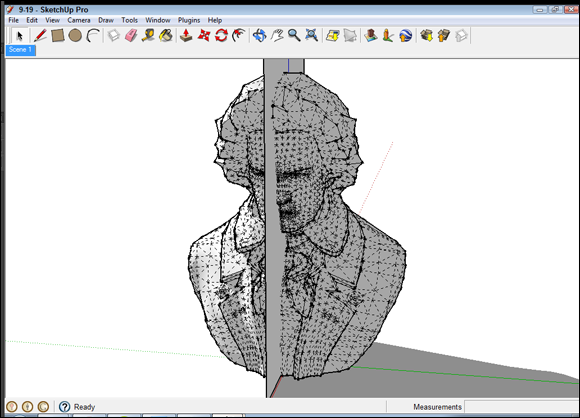
FIGURE 9-15: The cutter object can be a single plane; it’s going to become part of the solid object.
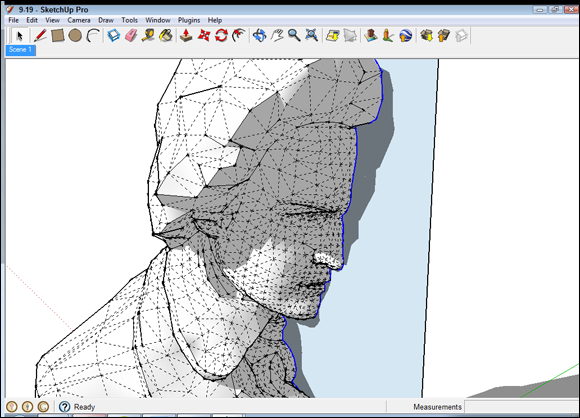
FIGURE 9-16: Lines of intersection created between the two groups.
-
Inside each group, use Explode to stick the intersection lines, cutting object, and base object together.
The surface of the cutting object becomes the sides of the new part.
- Move back out to the master group and make as many copies of that group as the number of parts you’re dividing it into (see Figure 9-17).
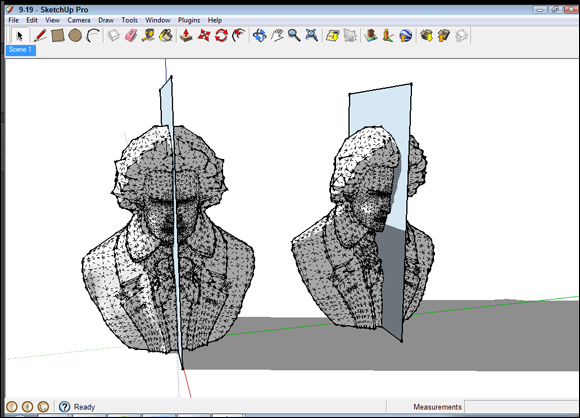
FIGURE 9-17: Make one copy of the group for each part of your model.
-
In each copy, open the group for editing; erase everything you don’t need in that part; and do the same in the other parts.
Just make sure you don’t erase what the object needs to do its job. If you wind up with a missing face, undo your erasing, select everything in the group, and then right-click and select Intersect with Selection.
- Run CleanUp3 on the new parts. and use Solid Inspector to check for any accidental holes.
- Position the parts together to make sure everything lines up as expected, as shown in Figure 9-18.
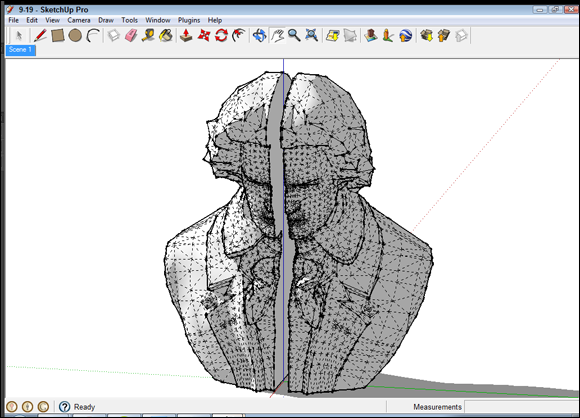
FIGURE 9-18: It still fits!
Exporting Your SketchUp File
After you’ve cleaned up your SketchUp model and you’re ready to print it, you have to get your 3D model out of SketchUp and into your 3D printer’s control software. Before your 3D printer can open your model, you have to export the model in either the STL or OBJ file format. The STL (derived from STereoLithography) file format is the de facto standard in the 3D printing world. Most 3D modeling software can export STL files, and most 3D printer support software can import them. The word most is used in case someone manages to find an exception.
To export an STL file from SketchUp, select File ⇒ Export ⇒ 3D Model; then select Stereolithography File from the Save As Type drop list (Web: select File ⇒ Export ⇒ STL).
3D printing services
3D printing services offer access to professional-level machines on a pay-per-print basis. Cost is based on volume of material printed, and you receive your printed object by mail in a few working days. Each company offers detailed instructions on minimum part sizes, wall thicknesses, and feature size. Pay attention to these rules. The services know what their machines can do, and you don’t want to be stuck waiting a week for a part that didn’t come out right.
Two examples of 3D printing services are Shapeways (https://www.shapeways.com) and Ponoko (https://www.ponoko.com).
Using Your 3D Printer
Your new 3D printer’s manufacturer will have documentation to help you use the printer and the software, so we don’t go into detail here about using specific machines. The following sections touch on a few general concepts of 3D printing that are often not explained well.
Print early, print often
Desktop 3D printing is cheap. Really, unbelievably, remarkably cheap. Cost for running a typical desktop 3D printer is about 60 cents an hour. Once you’ve started the printer, it doesn’t need any more input from you, which frees you to continue working on your design. With such an amazing tool that’s so cheap to use, don’t be afraid to print constantly. Print your SketchUp model over and over as you improve it; doing so helps you develop it.
3D printers are built to print; they don’t like to stand idle. Print more often! You’ll become an old hand at using your machine and get to see your design as it evolves in real time.
- Test prints that use your 3D printer’s Low Quality setting will print faster but with a rougher surface.
- Save test prints as the project goes on. They’re a great way to show progress, and clients love to see a physical expression of the work being done.
- Many 3D-printing plastics are recyclable or biodegradable. When you’re done with your models made of this stuff, toss them in the recycling bin or on the compost heap.
Inside your model
3D-printed parts are unique in the world of fabrication. After you’ve created the outside of your part, you also get to decide what happens on its inside. Usually you let the 3D printer automatically handle the inside of the part, filling it with automatically generated structure. It’s also possible to model a part’s interior structure to change how it behaves. For example, you might want to hollow out the center of a part to make it lighter or add space for internal components. Some possible variations include
- Internal voids: On SLS and stereolithography machines, a common cost-saving strategy is to build parts as a thin shell with an empty interior. The resulting parts have compromised structural strength but are printed using as little material as possible. Be sure to include drain holes so the unhardened material you saved can escape from the part.
- Part density: FDM printers automatically generate a structure to fill the interior of their prints. The density of the structure is controlled by a setting called fill, which is stated as a percentage. Parts with 100 percent fill will be solid plastic all the way through and are as strong as injection-molded parts. Typically, FDM printers default to building parts at 10 percent fill, meaning that 10 percent of the interior is filled with plastic. Higher fill percentage means more plastic used — and longer print times. Generally speaking, anything over 40 percent is a waste of time and plastic.
- Outer wall thickness: Another FDM printer setting, this deals with the amount of material put into the walls of the object before starting the Infill. Look for a setting called Shells, which is the number of layers of plastic the printer will use to make the outside of the model. If you're having trouble with parts crushing, increase the number of Shells; otherwise leave this setting alone.
- Flexibility: Flexible materials are available on most 3D printers, usually by using a special flexible plastic filament. You can also make structures flexible by making them very thin with 0 percent infill.
Going beyond Basic 3D Printing
The more you use your 3D printer, the more you may find it affecting your SketchUp designs. Don’t be surprised if your designs become a bit more ambitious and mechanically complex. This section of the chapter outlines some possible directions and factors to watch out for.
Designing parts that connect
So you cut your model into parts. Now you need a way to get it to all stay together after it’s printed. In this section, you discover different strategies and features, mechanical and otherwise, that you can build into your model for attaching its parts together.
Tolerance and clearance
Before we get into a discussion about mechanical connections, you need to understand two more of those pesky realities that crop up when you move out of SketchUp’s idealized environment: tolerance and clearance.
- Tolerance is the difference between the measurement of your part in SketchUp and the measurement of the part produced by your 3D printer. If you draw a 10mm cube in SketchUp and 3D-print it, none of the measurements of the printed cube will be exactly 10mm. The differences are small — just a few tenths of a millimeter more or less — but they can cause problems if your 3D-printed parts have to connect to parts that already exist in the real world. The 3D printer’s manufacturer provides a number for the machine’s tolerance as a plus or minus value, usually something like pm0.05mm. This is the maximum variation for that machine, and you should be aware of it as you work.
- Clearance is the extra space you need for parts to slide past one another. If you try to install a 10mm peg in a 10mm hole, you’re in for a bit of a surprise when the two won’t go together. The peg and hole can fit perfectly in SketchUp, but that’s not what’s going to happen in the real world where you have to contend with friction. The surface of the peg is so much like the surface of the hole that the friction between them will keep the peg from ever going in if the fit is too exact. You need to add a small amount of space called clearance so the two parts can slide past each other. How much clearance you use depends on how the part needs to move. A spinning shaft, for example, needs more clearance than a simple snap fitting.
You’ll come to an inherent understanding of clearance and tolerance as you do more designing in SketchUp for 3D printing. As you use your 3D printer, you’ll be able to find values that work well with your equipment.
Glue
Glue, shown in Figure 9-19, is the universal way to stick something to something else. Unfortunately, it’s also the weakest and most unreliable method. Glue joints in plastics have very little strength and will tend to break under stress, in response to temperature change, or if you look at them funny. If your part is meant to be anything more than a visual model, use one of the other attachment systems.
- The plastics used in 3D printers — ABS, PLA, PVA, nylon, and PETT — all require special glues to bond. These glues are available, but must be ordered from an online retailer.
- Biodegradable starch plastics such as PLA have a crystalline structure that doesn't work well with liquid superglue. The glue tends to stay liquid and migrate unexpectedly across the surface of the part.
- When in doubt, use epoxy. It’s messy stuff but will stick to pretty much anything.
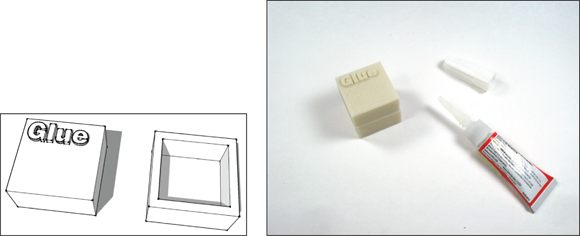
FIGURE 9-19: Works cosmetically, but don’t expect much durability unless you use epoxy.
- There are no glues that will stick to the flexible materials that are available for 3D printers. To attach parts made of that stuff, you’ll need to look into a process called thermal welding, which is way outside the scope of this book.
We knew a person who invented the universal glue. It would stick anything to anything. It was a dismal failure: Nobody could get the lid off the bottle.
Snap fittings
Snap fittings are an awesome way to take advantage of your 3D printer. Properly designed, they’ll let you pop your model together as soon as the parts come off the printer. Snap fittings can also be removable, so you can change out various parts of your model as the design evolves.
In SketchUp, you create snap fittings like those shown in Figure 9-20 by following two general steps:
- Create the tongue with the Line and Push/Pull tools.
- Create a matching capture point on the opposing part.
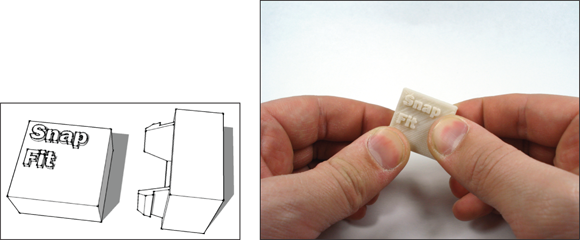
FIGURE 9-20: A snap fit joint is great for reusable connections.
- Be sure to leave enough space for the tongue to bend backward as it slides into place.
- Include a clearance of between 0.2mm and 0.5mm, depending on how tight you need the joint to be.
- Always position snap fittings so they print horizontal to the 3D printer’s build platform. Snap fittings printed in the Z direction, perpendicular to the platform, tend to break off.
- If you want your snap fitting to be reopenable, make sure that you provide a way for the tongue to disengage from the capture. This can either be a ramp in the geometry that forces the tongue backward as you pull on the joint, or an access point that lets you release the tongue manually.
- Don’t make the tongue too thick. It has to bend for the joint to go together.
Press fit
A press fit is when two parts are designed with very little clearance between them. When the parts are forcibly pressed together, friction keeps the joint together with no additional hardware or glue.
To make a press fit like the one shown in Figure 9-21, use the Offset tool to create an outer lip on one side of the connection and an inner lip on the other side. Include a clearance of 0.2mm or less between parts, so you can still assemble them. Keep a few points in mind about press fits:
- For a press fit to work well, it needs to be a tight connection. You might need a small hammer, large clamp, or your whole body weight to press the parts together.
- A press fit is usually a one-way connection. After you put it together, don’t expect to ever get it back apart.
- Press fits don’t scale up well. Always design them at the size at which they’ll be printed.
- The tight clearance of a press fit can make it difficult to get started. Running a hobby knife or deburring tool around the edge of the hole will widen that area a bit and help you get the parts together.

FIGURE 9-21: A press fit is an easy connection to draw in SketchUp.
Bolts, screws, and hardware
The strongest connection you can make between 3D-printed parts is one held together with metal hardware. These connections are great for things that are more than just prototypes — for example, parts for robots or mechanisms.
When integrating hardware into your design, include the hardware in your SketchUp model. Take measurements of the parts you’re planning to use and model them in SketchUp. After you make these components, save them to the component library so that you can use them again with one click. Keep these points in mind:
- Remember to include enough clearance in your holes for the hardware to be installed.
- If you’re using bolts or screws and don’t want to include a matching nut, a trick is to slightly undersize the holes. The threads of the bolt will cut into the excess plastic and hold it firmly in place, as shown in Figure 9-22. Better yet, standard self-tapping screws designed specifically for cutting their own threads in plastic are readily available.
- Online hardware suppliers like McMaster Carr and Amazon Supply stock every fastener known to the human race. If your local hardware store doesn't have what you're looking for, these online stores will have it.
Testing your model’s moving parts
Whatever connection system you are using, always test it first. Before you start printing a giant project, build a small version of the attachment. It takes only a few minutes to design and 3D-print and will give you a chance to make sure the joint works properly. Nothing is worse than modeling a system of joints and then discovering they don't fit together properly.
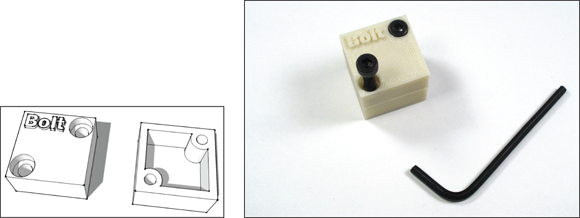
FIGURE 9-22: Nothing says strength like an exposed bolt.
Designing Things That Move
3D-printing something you’ve designed in SketchUp is cool. 3D-printing something that moves is even cooler. This section focuses on a few features you can include to make your creations more than just interestingly shaped hunks of immobile plastic.
Captive joints
A captive joint is a moveable connection that comes out of your 3D printer already assembled and working. Captive joints tend to be mechanically simple hinges, ball joints, and chain links. Their simplicity is their power. A 3D printer can quickly build objects with hundreds of captive joints that would take days to construct by hand. Poseable action figures, clothing, and the chain mail in Figure 9-23 are examples of simple captive joints assembled into complex structures.
Creating a captive joint requires trial and error. You’ll have to experiment to get the right combination of clearances and shapes. Keep these principles in mind while you work on captive joints:
- Use components when building structures with captive joints; they let you automatically modify all the joints at once as you work.
- How you design captive joints depends on the specific 3D printing technology you’re using. SLS-based 3D printers can build captive joints that are a few millimeters across. FDM printers can make fantastically strong joints, but the printed objects need to be much bigger.
- A structure is only as strong as its weakest part. Don’t make a joint so fine that it falls apart in your hands.
- Test print parts of your structure as you work. Remember, 3D printing is cheap, and with captive joints, you're pushing the limits of the technology. Test objects will help you check your work and keep your sanity.

FIGURE 9-23: Captive joints bring the power of multiplication to life.
Pins
Pins are small, round snap fittings that are pressed into place to make a connection. They can be a versatile replacement for hardware. In Figure 9-24, a single pin acts as a point of rotation, and two or more will hold parts firmly together.

FIGURE 9-24: A system of pin joints used to make a simple toy.
Pins are like bolts, except you get to make them in exactly the size and shape you need. You can also print more when you run out.
- When designing your pins, give them one flat side. The flat side gives you a way to build the pins without using support material — while keeping the tongues horizontal to the build platform. This process also keeps finished pins from rolling off your desk.
- Make your pins into components so you can easily modify all of them at once if you need to.
- When designing a project with pin joints, make an effort to standardize around a small number of pin sizes. Standardization helps keep things tidy and simplifies assembly.
Gears
Gears are great for creating complex motions or transferring movement through a mechanism. That is probably the most understated description of the deepest rabbit hole of the industrial age. Gears are in every mechanical device you can imagine. They have existed in some form or other since before recorded history, and are the basis for an incalculable number of clever devices that make everyday life possible.
Making gears is fun and inspires lots of folks to start experimenting with 3D printing. Figure 9-25 shows a simple gear system that can become so much more. To help you get started, here a few basic principles for making gears:
- Gears need to have clearance between their surfaces to work properly. Gears that are too perfect a fit will bind up. Include a clearance at both the point of rotation and between the teeth of the gear and the teeth of its mate.
- A SketchUp extension called Involute Gears automates the process of making gears. The extension’s creator hasn’t made it available in the SketchUp Extension Warehouse, so you’ll need to locate it by searching sketchup gear plugin through a search engine.
- Creating optimized gears from scratch is a technical art form that has fallen out of practice. If you want to learn more about designing gears, I recommend getting a copy of Machinery’s Handbook (Industrial Press). After more than a century in print (it was first published in 1914 and is still updated regularly), this book is the gold standard for anything machinery-related.

FIGURE 9-25: Welcome to the New Industrial Revolution. Time to gear up.
Assemblies
A cool feature of 3D printing is that it makes it possible to build things that cannot be made any other way. Assemblies in particular fall into this category. The two-piece assembly shown in Figure 9-26 can be printed in one single run. The collar can be slid back and forth but cannot be removed from the spool. A practical use for an assembly would be to have a child’s toy with free-turning wheels that can’t be removed from their axles. When you design this type of application, just make sure you model the parts with enough running clearance, meaning the hole in the wheel must be bigger than the diameter of the axle so the wheel can turn freely.

FIGURE 9-26: An impossible assembly.
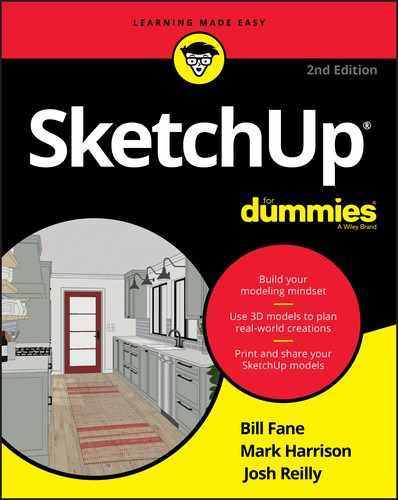
 The need to support each layer is the most important guideline to keep in mind while you’re designing objects for 3D printing. You can use either of two strategies to support new layers as you’re printing objects:
The need to support each layer is the most important guideline to keep in mind while you’re designing objects for 3D printing. You can use either of two strategies to support new layers as you’re printing objects: